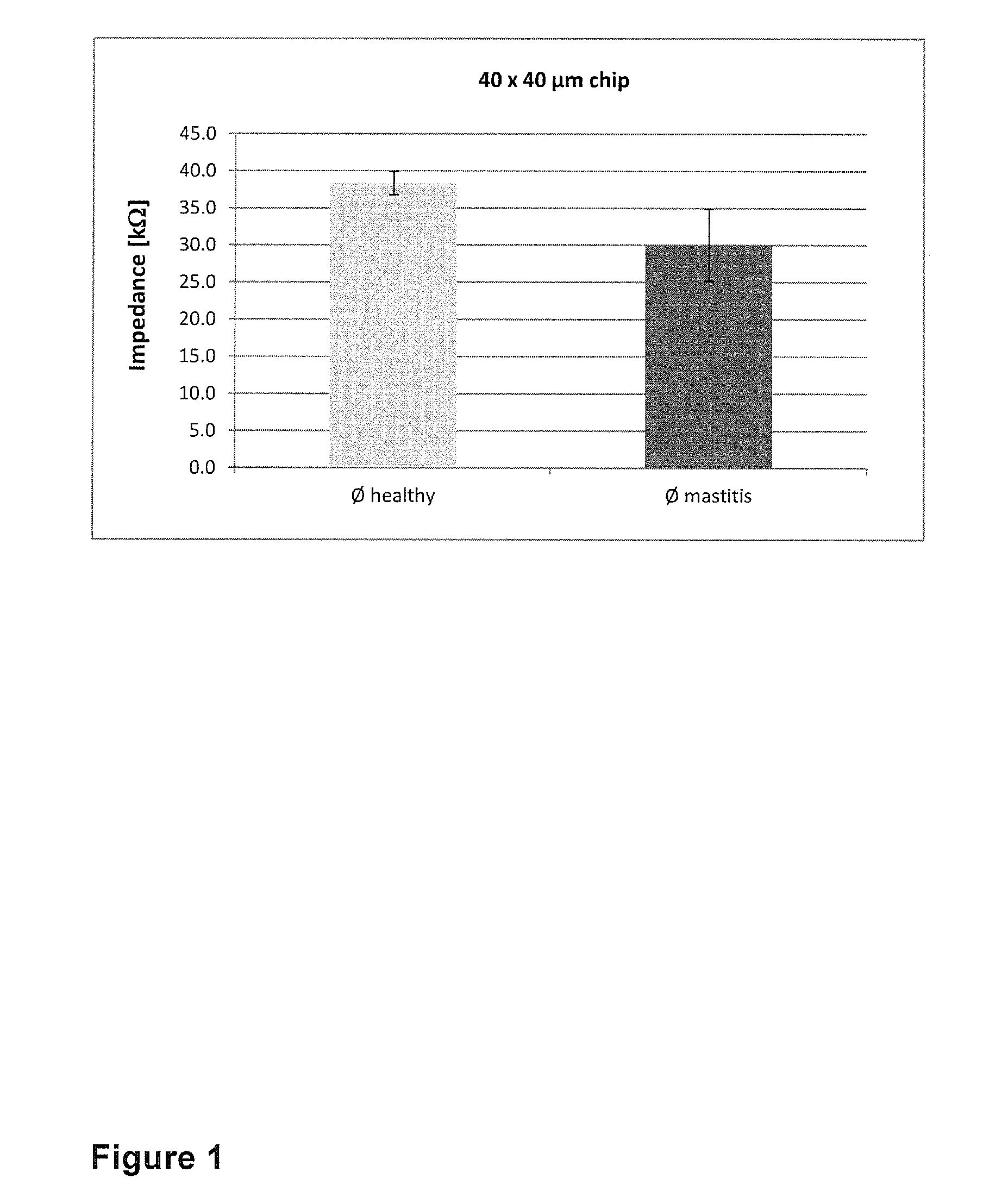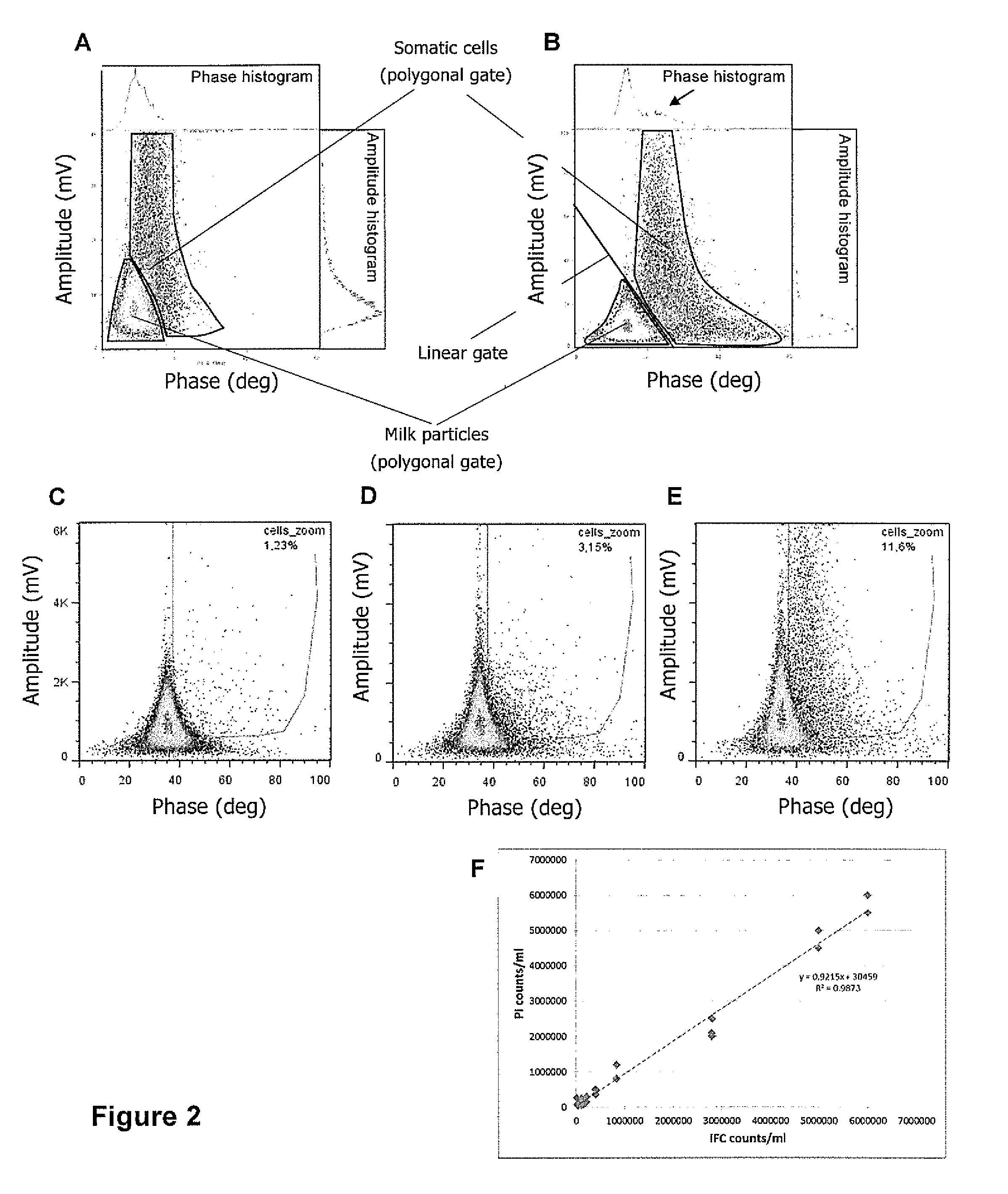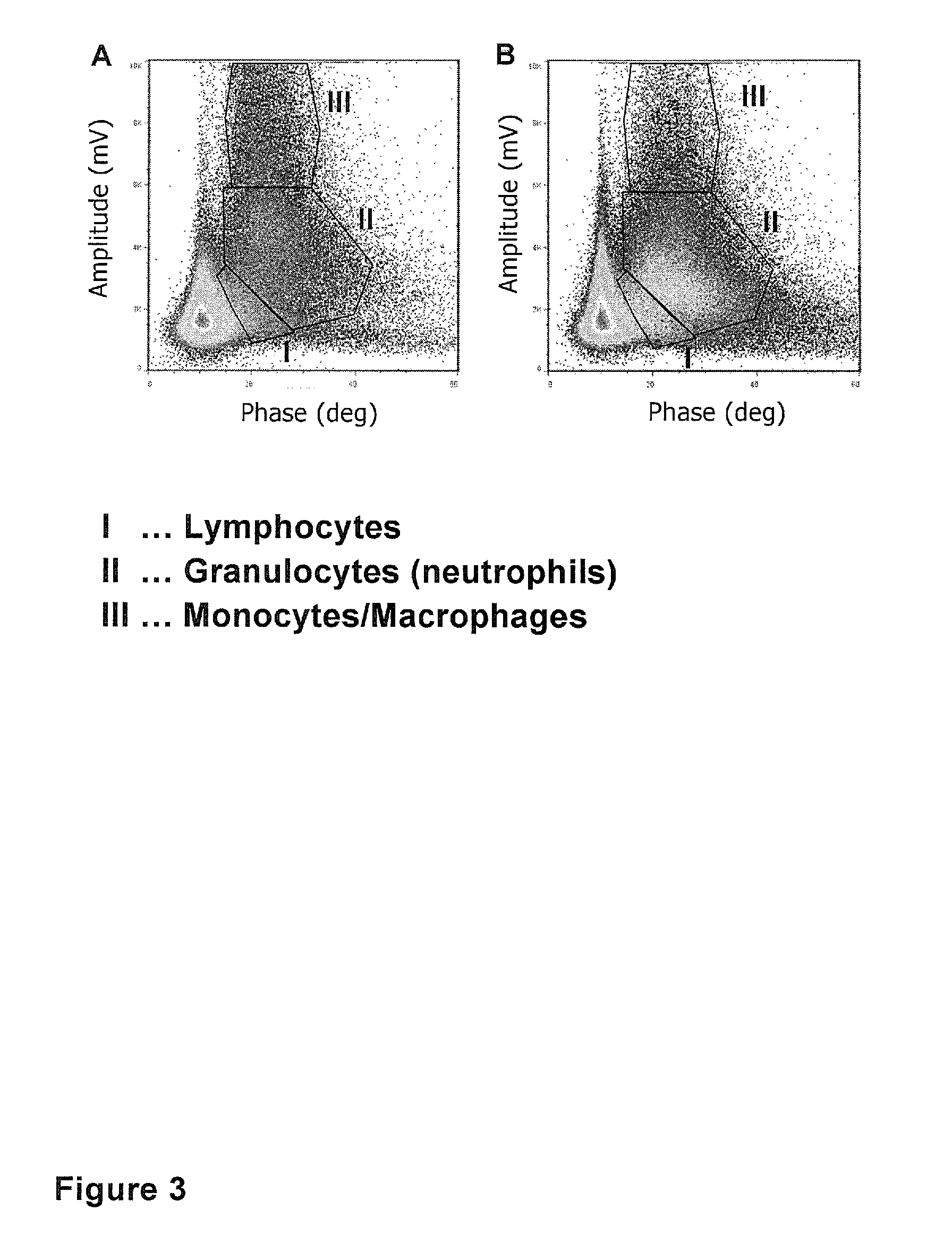Method and apparatus for the discrimination of the cell load in milk
a cell load and discrimination technology, applied in the field of milk cell load discrimination, can solve the problems of inability to provide such detailed information to qualify the milk quality for human consumption, inability to test individual animals at each milking, and inability to meet the requirements of human consumption, etc., and achieve the effect of fast method
- Summary
- Abstract
- Description
- Claims
- Application Information
AI Technical Summary
Benefits of technology
Problems solved by technology
Method used
Image
Examples
Embodiment Construction
[0042]The analysis according to FIG. 1 was performed with a chip with 40×40 μm sensing channel dimensions. Bright bar represent healthy, dark bar infected samples. The histograms show the mean values and standard deviations of the absolute impedance amplitudes in kΩ, which depend on the channel dimensions. The figure shows that the impedance values of raw milk with higher SCCs have lower impedance amplitudes. Thus, low impedance values of raw milk provide first qualitative indications of increased somatic cell count.
[0043]As opposed to conventional impedance analysis performed with Coulter counters, not only the Amplitude of the signal is recorded, but also the Phase φ. Triggering against the real part of the impedance signals and plotting them on a Phase-Amplitude diagram, in which each dot represents the signal of one single cell or milk particle, leads to the data depicted in FIG. 2. The dot plots are complemented with the relative histograms (Amplitude for y-axis, Phase for x-ax...
PUM
| Property | Measurement | Unit |
|---|---|---|
| size | aaaaa | aaaaa |
| frequency | aaaaa | aaaaa |
| size | aaaaa | aaaaa |
Abstract
Description
Claims
Application Information
 Login to View More
Login to View More - R&D
- Intellectual Property
- Life Sciences
- Materials
- Tech Scout
- Unparalleled Data Quality
- Higher Quality Content
- 60% Fewer Hallucinations
Browse by: Latest US Patents, China's latest patents, Technical Efficacy Thesaurus, Application Domain, Technology Topic, Popular Technical Reports.
© 2025 PatSnap. All rights reserved.Legal|Privacy policy|Modern Slavery Act Transparency Statement|Sitemap|About US| Contact US: help@patsnap.com



